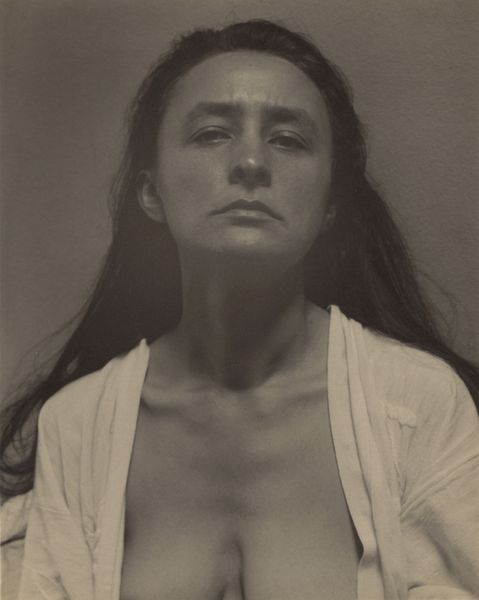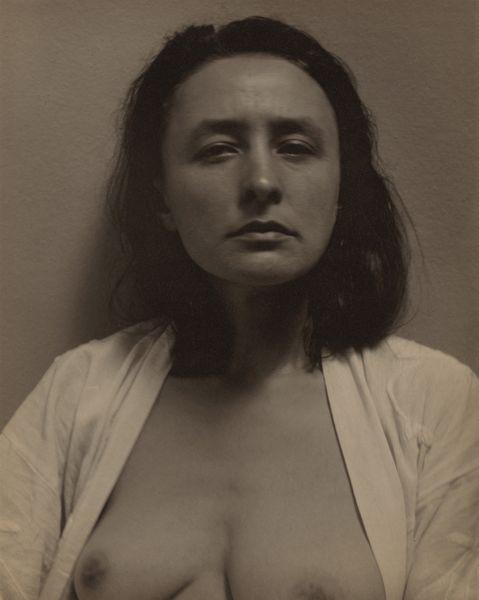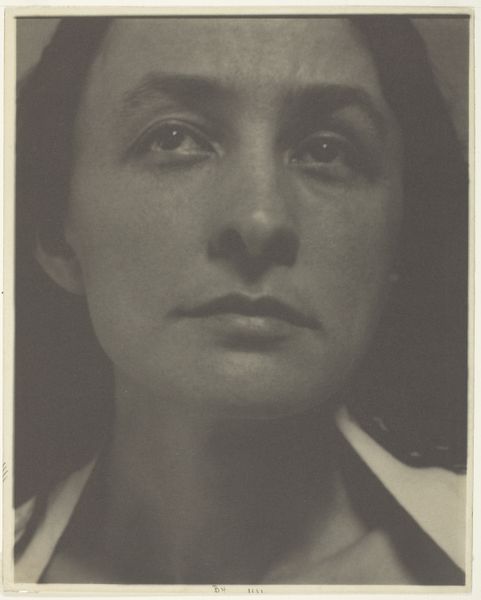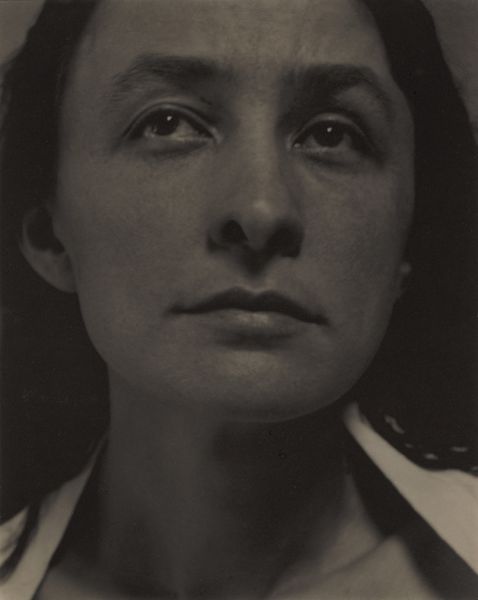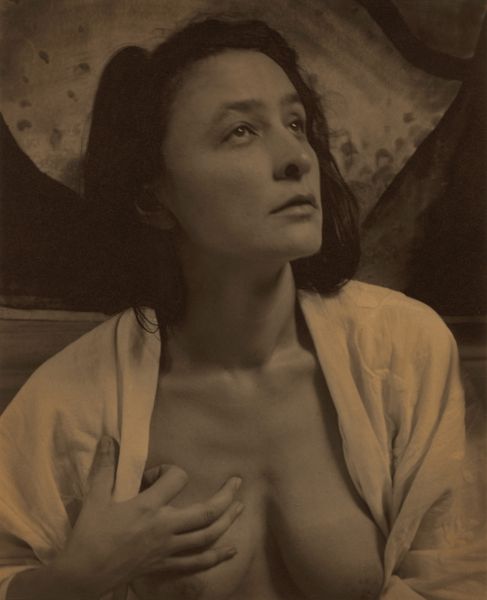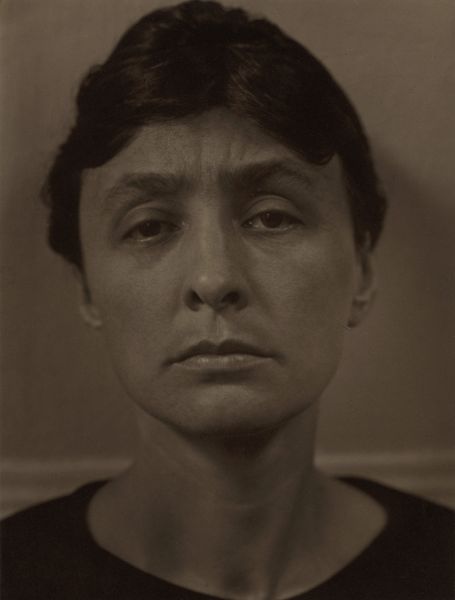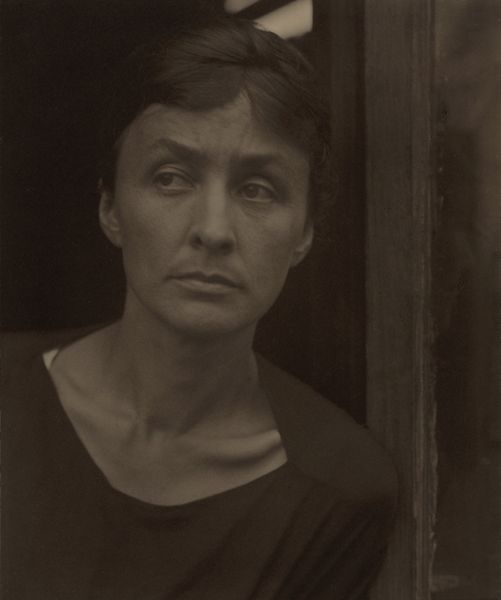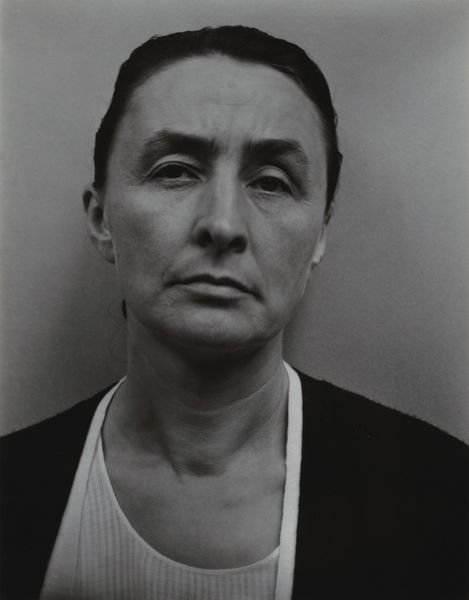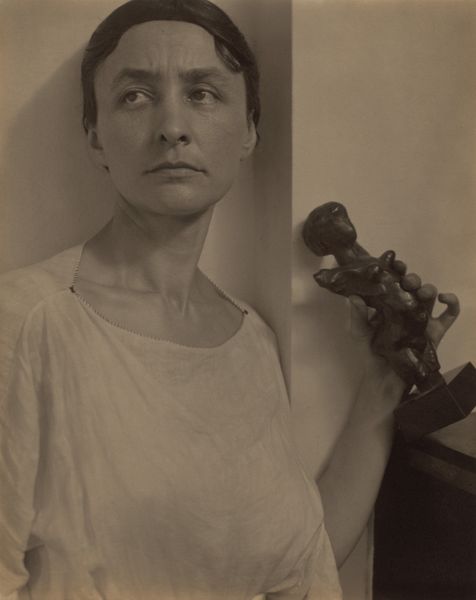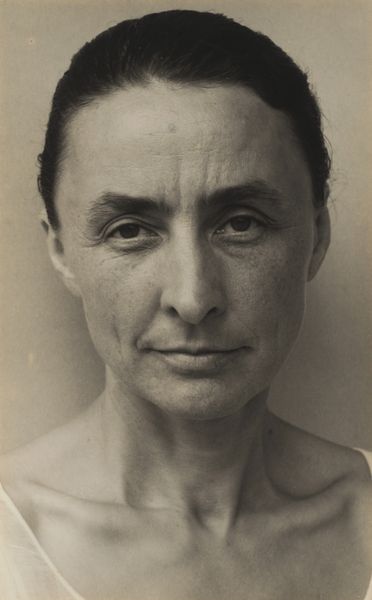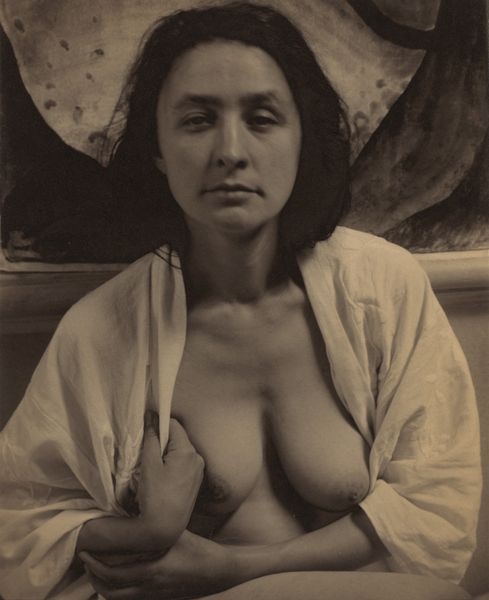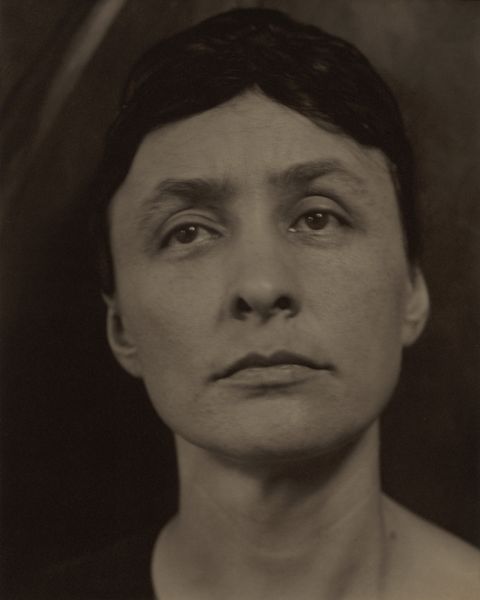
photography
#
portrait
#
self-portrait
#
pictorialism
#
portrait
#
photography
#
modernism
Dimensions: image: 23.2 x 18.5 cm (9 1/8 x 7 5/16 in.) sheet: 25.1 x 20 cm (9 7/8 x 7 7/8 in.)
Copyright: National Gallery of Art: CC0 1.0
Curator: Looking up, slightly off center, a muted monochrome… it feels rather intimate, wouldn’t you say? Editor: Yes, it does. What we’re looking at is a photograph titled "Georgia O'Keeffe," taken by Alfred Stieglitz around 1918. Curator: Stieglitz. Of course. Immediately I see this yearning gaze, and, because it is a portrait, I sense the psychological depth inherent to portraiture. The upward gaze... could suggest inspiration, a spiritual aspiration, or perhaps even a vulnerability in seeking something beyond oneself. Editor: Absolutely. The soft focus typical of Pictorialism also lends it a dreamlike quality, blurring the edges, softening the details to move past purely documentary depiction and towards conveying inner emotions. Given their complicated relationship, you have to wonder about its politics. This portrait, exhibited widely, undoubtedly played a large part in shaping her image, literally and figuratively. Curator: Oh, fascinating to think how the relationship impacts the symbols here! He clearly romanticizes her, or perhaps she directs it... but I see in the angle of the head, the darkness of the hair contrasting the paleness of the skin – even that robe could have iconographic importance to them, possibly related to rebirth or transformation. Editor: It’s hard to separate Stieglitz's representation from O'Keeffe’s own self-fashioning, but certainly, its repeated display shaped how modern audiences encountered not just her image but her persona as a pioneering female artist. You might also consider how his gallery "291," supported by his wealthy wife at the time, created the circumstances to make the picture, in the first place. It underscores the extent to which both artistic creation and reception is interwoven with specific socioeconomic conditions. Curator: Very insightful. I’m still captivated by her expression; its open yet thoughtful, conveying a potent inner life. This is the power of art to connect us through empathy across the decades! Editor: Precisely! Art serves as both a cultural mirror reflecting society and as a window through which to envision our shared human existence and consider all the power structures at play.
Comments
No comments
Be the first to comment and join the conversation on the ultimate creative platform.
